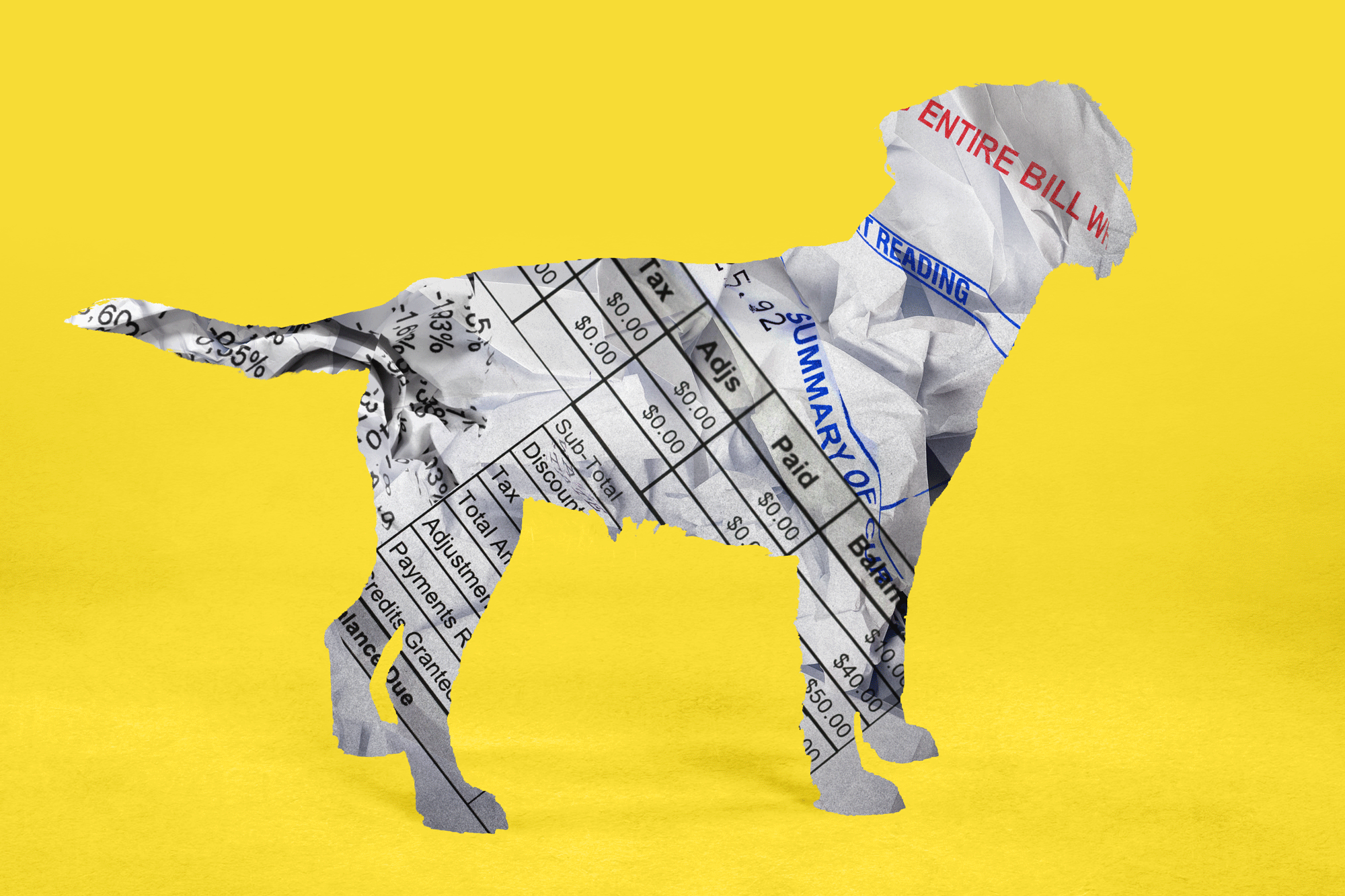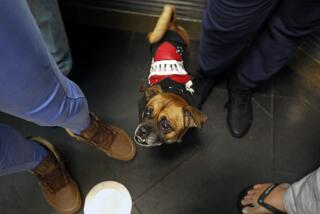Growth of Veterinary Specialization Gives Pet Owners More Options
- Share via
GLENN DALE, Md. — Not too long ago, Snuggles’ broken leg might have put an end to her existence. But thanks to a couple of tiny steel pins and the surgical expertise of veterinarian Gary Goldstein, Snuggles went home, intact, one happy ferret.
“We have a 100 percent success rate with ferrets,” says Goldstein, who normally restricts his medical magic to dogs and cats at the Beltway Surgical Referral Center.
However, during his 10-year career, Goldstein has performed a Caesarean section on a snake, repaired a ruptured disk in an African antelope and pinned the fractured jaw of an 800-pound Bengal tiger that was roughed up by her son.
Specialization in a veterinary practice is becoming more common, giving pet owners an option to having their animals crippled or put to sleep.
50,000 U.S. Vets
There are about 50,000 veterinarians in the United States, but only about 5 percent go on to specialize in such areas as cardiology, internal medicine and surgery, says Dr. Arthur Freeman, executive vice president of the American Veterinary Medical Assn. in Schaumburg, Ill. He says, however, that more vets are joining the ranks.
There are 27 schools of veterinary medicine in the nation and all offer advanced clinical specialty programs, says Franklin Loew, dean of the veterinary school at Tufts University in North Grafton, Mass. “That wasn’t the case 20 years ago.”
This is what pet owners will do for love:
Cardiac pacemakers for dogs with faltering tickers; chemotherapy and radiation treatments for animals with cancer; hip replacement for crippled animals; reconstructive surgery for animals with severe burns, and exploratory surgery to find the reason for Flossie or Fido’s chronic vomiting, chronic diarrhea or chronic whatever.
Goldstein, a tall, lanky fellow, shares office space with an internal medicine specialist, a veterinary cardiologist and a radiologist. He does not offer traditional services like spaying, neutering, worming and vaccinations.
In Demand
Alan Bachrach, who has a private practice in Lincoln, Mass., estimates that he is one of only about 100 veterinary ophthalmologists in the country and says he is in demand. “We are booked a couple of months in advance.”
“Vets are specializing now because people want it,” he says. “They expect the same services for their pets that they would be able to get.”
Goldstein says he chose surgery because he likes the gratification of physically fixing things, often with immediate results, but he is fully aware that it is pet owners’ willingness to pay that keeps him in business.
And money is one reason for the specialization spiral.
“The so-called high-tech medicine can only develop when there is a market willing to bear the costs of such care,” says Loew.
Profit Motive
The United States has more pets living within its borders--about 110 million of them--than many nations have people, he says, and that’s a lot of potential in pet dollars. “Of course, there are still people who will tell you, ‘This cat’s only worth $5, and I won’t pay the costs of its medical care. Go ahead and put it to sleep.’ ”
But that scenario is changing, Loew says. “It wasn’t too long ago that people were embarrassed to talk about spending money on their pets, like they thought they should be spending it on the poor or something.” Today, more people are realizing that pets are helpful to their own emotional health, he says.
People generally don’t say no to big price tags when it comes to their animals, Goldstein says. They may gulp and do a little mental rejiggering of bills payable when they hear that Fido’s surgery may set them back $800, but “the people who love their animals are going to go for it,” he says.
“They’ll just do without something. If it wasn’t going to go for that animal, it would be going toward something like beer or cigarettes,” he says.
Washington pet owner Susan Lihn can tell a few tales about little luxuries that never were.
Many Ailments
“Oh please, I’ve spent a fortune on Rodney,” she says, referring to her 10-year-old black standard poodle.
“I’ve taken him to an eye specialist when he had this gunk in his eyes, and he has a thyroid condition and has to take thyroid pills twice a day for the rest of his life”--which she rolls in Rodney’s favorite cream cheese to make them more palatable--”and his spleen exploded.”
The spleen condition, which required emergency surgery, cost more than $600.
In addition, Rodney once swallowed a pair of heavy athletic socks--”not mine,” Lihn says. They had to be surgically removed to the tune of $150.
What do you say when a friend’s beloved pet dies?
Well, if words fail, but courtesy demands a response, you now have somewhere to turn. Pet sympathy cards--the hot new line from the greeting-card industry.
Pet Sympathy Cards
The national obsession with Flossie and Fido has not escaped the industry’s eagle eye, and card-company giants Hallmark and American Greetings have been turning out pet condolences to feed the market’s demand.
Even the smaller card companies are getting in on the action, at least those that carry a full line of cards, says Marianne McDermott, executive vice president of the Greeting Card Assn. in Washington.
You may well ask, “Who buys these cards?”
“I’m a cat lover and I love these things,” says McDermott. “Animal lovers eat these things up.”
There is no doubt that the cards are a popular item, says Hallmark spokeswoman Rachel Bolton, popular enough that the company keeps adding to the line, which it inaugurated in 1984.
‘Like Family’
Following on Hallmark’s tail is American Greetings, which came out with its first, and so far only, pet sympathy card in 1985. “Our life-style research showed that people weren’t having babies but they were having pets, and these pets are like members of the family,” says Dennis Chupa, group product manager for American Greetings in Cleveland.
“We just decided it was time to take a shot at this market.”
American Greetings sells about 24,000 of the pet sympathy cards annually, and Chupa expects the company to expand the line in another year.
The most recent addition to Hallmark’s pet condolences is a rather formal card compared to its two predecessors. The card bears the simple inscription “In the loss of your pet” in a green script on a grayish-green faux-marble background. The whole thing looks remarkably like a tombstone.
Inside, it reads: “Losing a loving pet who has been a special friend is never easy. Please know that others understand your sense of loss and are thinking of you.”
The line has been so successful--Hallmark expects to sell 60,000 of the sympathy cards in 1987--that it has spawned other pet birthday cards and holiday greeting cards, Bolton says.
More to Read
Sign up for Essential California
The most important California stories and recommendations in your inbox every morning.
You may occasionally receive promotional content from the Los Angeles Times.










